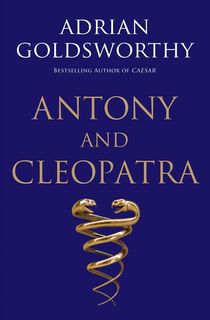When you hear Cleopatra mentioned, what image does the name invoke for you? For some, it’s Elizabeth Taylor, with glittering braids and blue eyeshadow that’s packed in up to her eyebrows. For others, it’s Jean-Léon Gérôme’s painting, Cleopatra and Caesar, in which the queen appears young, seductive, and scantily clad. These depictions thrust her romances with Julius Caesar and Marc Antony to the forefront, with her rule over Egypt falling by the wayside.
Indeed, pop culture often portrays Cleopatra as a vamp, a charming woman who was born at the top and slept with two of Rome’s key players to remain there. However, what many don’t know is that the idea of the beautiful and savvy seductress that we commonly associate with Cleopatra is the result of Roman propaganda, which was carefully cultivated to reduce a brilliant ruler’s image. What’s worse—it worked.
Cleopatra VII Philopator was born in 69 BCE, a daughter of the Ptolemaic line, the family that had ruled Egypt for 300 years. They were the descendants of Ptolemy I Soter, a Macedonian general who had been a favorite of Alexander the Great’s. Raised in Alexandria, home of the famed lighthouse and the Great Library, Cleopatra was born into a bustling metropolis—and a powerful, untrustworthy family. This meant that Cleopatra had to learn at a young age how to successfully navigate fraught situations.
Related: 8 Historical Female Rulers Who Challenged the Status Quo
Cleopatra was an astute woman who spoke Koine Greek as her native language. She also took it upon herself to learn Egyptian, and was the first of the Ptolemaic line to bother to do so. Plutarch, a Greek historian, wrote that she spoke several languages, including Hebrew, Arabic, and Parthian. Plutarch also mentions that Cleopatra was not particularly beautiful, but was incredibly charming:
“For her beauty, as we are told, was in itself not altogether incomparable, nor such as to strike those who saw her; but converse with her had an irresistible charm, and her presence…had something stimulating about it.”
Cleopatra was a savvy ruler, a charming conversationalist, and a polyglot. During her reign, she established trade with other nations, and heavily influenced Roman politics (for better or worse). She’s become an indelible part of public consciousness in a way that Caesar Augustus , one of her most outspoken adversaries, has failed to.
If you’re interested in learning more about Cleopatra, her relationships with her family, and the society that preceded to allow her to rise to popularity and power in the way that she did, take a look at the books below.

Predecessors of Cleopatra
To help understand why Cleopatra ruled as she did—as a queen and co-regent to various members of her male family members, including her brother-husband (yes, you read that correctly) and her son—this book offers an overview of various queens throughout Egyptian history. Cleopatra would undoubtedly have taken note of propaganda around Nefertiti during the reign of her tyrannical husband, Akhenaten, as well as the sharp rise and eventual fall in popularity of Hatshepsut, Egypt’s second female pharaoh.

Antony and Cleopatra
This book traces the life of not only Cleopatra, but one of her famed lovers—Marc Antony. Adrian Goldsworthy recounts the Ptolemaic reliance on Roman relationships, and this tradition that Cleopatra continued in her own unique way. By examining Marc Antony’s side of the story, we gain a fuller understanding of the Roman military and political theaters. Goldsworthy doesn’t romanticize Antony and Cleopatra’s relationship in the fashion that Shakespeare and filmmaker Joseph L. Mankiewicz did, however. This dual biography presents the pair not as the seductress and her prey, or as soulmates, but as people and leaders, first and foremost.
Related: 11 Roman History Books Beyond The Rise and Fall of the Roman Empire

Cleopatra: A Life
This Pulitzer Prize-winning biography of the Ptolemaic queen brings her to life, while also fleshing out her contemporaries and the society that she lived in. Stacy Schiff includes accounts of both Cleopatra’s admirers and her detractors, offering a full picture of her reputation as she was perceived at the time. Schiff’s prose draws the reader into the hustle and bustle of Alexandria at every level, while examining the hard facts and records of the governance that remain from Cleopatra’s rule.

When Women Ruled the World: Six Queens of Egypt
Drawing astute parallels between the political climate in the 21st century and the rarity of Egyptian queens acting as regents and rulers rather than figureheads, Kara Cooney analyzes women in power. She dissects how female rulers rose to power in Ancient Egypt, and how they were perceived. What measures did Cleopatra have to take to convince others of her capabilities? And to what extent do female politicians have to alter their appearances and tactics to succeed in politics today?

Cleopatra: Last Queen of Egypt
This account works to not only explain Cleopatra’s life, but untangle the myths and inaccuracies that we’ve come to associate with her. It also examines the Ptolemies. After three centuries of backstabbing, lying, conniving, and murder, the family seemed to have little love or allegiance for one another. This heavily influenced Cleopatra’s life–including the civil war that she found herself embroiled in with her brother-husband, Ptolemy XIV. This war would lead to Cleopatra’s eventual alliance with Julius Caesar—and the rest is history.




